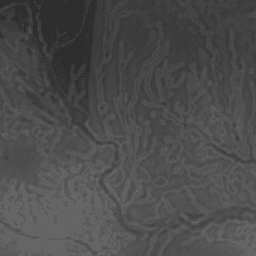
- Доступность набора данных
- 2006-01-24T00:00:00Z–2011-05-13T00:00:00Z
- Поставщик наборов данных
- Партнеры по науке сохранения природы
- Теги
Описание
Набор данных Physiographic Diversity представляет собой индекс разнообразия физиографических типов. Он был рассчитан с использованием индекса разнообразия Шеннона в различных масштабах (км): 115,8, 89,9, 35,5, 13,1, 5,6, 2,8 и 1,2. Он основан на 10-метровой цифровой модели рельефа (NED) Геологической службы США (USGS) (доступной в Восточной Европе как USGS/NED).
Наборы данных по экологически релевантной геоморфологии (ERGo), формам рельефа и физиографии, разработанные Conservation Science Partners (CSP), содержат подробные многомасштабные данные о формах рельефа и физиографических (т.н. «фасетных» структурах). Несмотря на множество потенциальных применений этих данных, изначальной целью их создания была разработка экологически релевантной классификации и карты форм рельефа и физиографических классов, подходящих для планирования адаптации к изменению климата. В связи с высокой неопределенностью, связанной с будущими климатическими условиями, и еще большей неопределенностью, связанной с экологическими реакциями, предоставление информации о том, что вряд ли изменится, дает руководителям надежную основу для разработки надежных планов адаптации к изменению климата. Количественная оценка этих характеристик ландшафта чувствительна к разрешению, поэтому мы предоставляем максимально возможное разрешение с учетом масштаба и характеристик данного индекса.
Группы
Размер пикселя
270 метров
Группы
| Имя | Мин. | Макс | Размер пикселя | Описание |
|---|---|---|---|---|
b1 | 0 | 1 | метров | Физико-географическое разнообразие |
Условия эксплуатации
Условия эксплуатации
Цитаты
Теобальд, Д.М., Харрисон-Атлас, Д., Монахан, У.Б., и Альбано, К.М. (2015). Экологически значимые карты рельефа и физико-географического разнообразия для планирования адаптации к изменению климата. PloS one, 10(12), e0143619
Исследуйте с Earth Engine
Редактор кода (JavaScript)
var dataset = ee.Image('CSP/ERGo/1_0/US/physioDiversity'); var physiographicDiversity = dataset.select('b1'); var physiographicDiversityVis = { min: 0.0, max: 1.0, }; Map.setCenter(-94.625, 39.825, 7); Map.addLayer( physiographicDiversity, physiographicDiversityVis, 'Physiographic Diversity');
